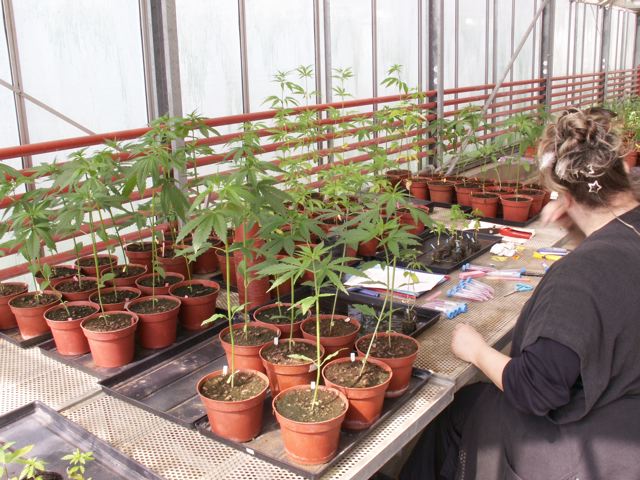Etude Cannabis
-
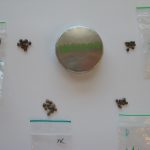
graines de chanvre Notre étude avait pour but d’évaluer la variation génétique entre les variétés de chanvre agricoles et les drogues en utilisant un assortiment de marqueurs STR hypervariables: 13 marqueurs ont été choisi pour génotyper 1324 échantillons sélectionnés spécifiquement représentant 24 variétés de chanvre et 15 de marijuana.
Abstract : Cannabis (hemp and marijuana) is an iconic yet controversial crop. On the one hand, it represents a growing market for pharmaceutical and agricultural sectors. On the other hand, plants synthetizing the psychoactive THC produce the most widespread illicit drug in the world. Yet, the difficulty to reliably distinguish between Cannabis varieties based on morphological or biochemical criteria imbeds the development of promising industrial programs and hinders the fight against narcotrafficking. Genetics offers an appropriate solution to characterize drug vs non-drug Cannabis. However, forensic applications require rapid and affordable genotyping of informative molecular markers for which a broad-scale reference database, representing both intra- and inter-variety variation, is available. Here we provide such resource for Cannabis, by genotyping 13 microsatellite loci (STRs) in 1,324 samples from 48 accessions known for fibre (24 hemp varieties) and drug (15 marijuana strains) production. We showed that these loci are sufficient to capture most of the genome-wide diversity patterns recently revealed by NGS data. We recovered the strong genetic structure between marijuana and hemp and demonstrated that anonymous samples can be confidently assigned to either plant types. Fibres appear genetically homogeneous whereas drugs show low (often clonal) within-strain diversity, but very high genetic differentiation between strains, likely resulting from breeding practices. Based on an additional test dataset including samples from 41 local police seizures, we showed that the genetic signature of marijuana cultivars could be used to trace crime scene evidence. To date, our study provides the most comprehensive genetic resource for Cannabis forensics worldwide.
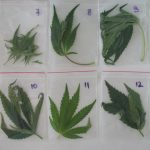 Broad-scale genetic diversity of Cannabis for forensic applications
Broad-scale genetic diversity of Cannabis for forensic applications
Christophe Dufresnes, Catherine Jan, Friederike Bienert, Jérôme Goudet and Luca Fumagalli
PLOS ONE | DOI:10.1371/journal.pone.0170522 January 20, 2017
voir article
Projet Perroquets
- En 2011, le laboratoire a reçu une série de prélèvements exceptionnels dans le cadre d’une affaire de trafic d’oiseaux exotiques: 123 plumes nous ont été confiées provenant d’un élevage présumé responsable de trafic déjà de longue date. Les soupçons suffisamment étayés et le prix que peut rapporter la vente illicite de certains perroquets ont motivé le service fédéral vétérinaire à engager une expertise génétique afin de poursuivre cet éleveur suspect. Ces analyses ont révélé que dans 3 situations examinées sur six, les oiseaux n’étaient pas apparentés, ce qui a renforcé l’hypothèse du trafic et permis de condamner le fraudeur.
Suite à cela, le laboratoire a mis au point une série de marqueurs permettant l’expertise lors de suspicion de trafic de perroquets.
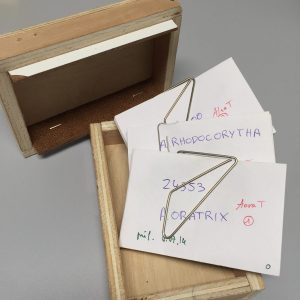 Abstract : The parrot family represents one of the bird group with the largest number of endangered species, as a result of habitat destruction and illegal trade. This illicit traffic involves the smuggling of eggs and animals, and the laundering through captive breeding facilities of wild-caught animals. Despite the huge potential of wildlife DNA forensics to determine with conclusive evidence illegal trade, current usage of DNA profiling approaches in parrots has been limited by the lack of suitable molecular markers specifically developed for the focal species and by low crossspecies polymorphism. In this study, we isolated DNA microsatellite markers in seven parrot species threatened with extinction (Amazona brasiliensis, A. oratrix, A. pretrei, A.rhodocorytha, Anodorhynchus leari, Ara rubrogenys and Primolius couloni). From an enriched genomic library followed by 454 pyrosequencing, we characterized a total of 106 polymorphic microsatellite markers (mostly tetranucleotides) in the seven species and tested them across an average number of 19 individuals per species. The mean number of alleles per species and across loci varied from 6.4 to 8.3, with the mean observed heterozygosities ranging from 0.65 to 0.84. Identity and parentage exclusion probabilities were highly discriminatory.
Abstract : The parrot family represents one of the bird group with the largest number of endangered species, as a result of habitat destruction and illegal trade. This illicit traffic involves the smuggling of eggs and animals, and the laundering through captive breeding facilities of wild-caught animals. Despite the huge potential of wildlife DNA forensics to determine with conclusive evidence illegal trade, current usage of DNA profiling approaches in parrots has been limited by the lack of suitable molecular markers specifically developed for the focal species and by low crossspecies polymorphism. In this study, we isolated DNA microsatellite markers in seven parrot species threatened with extinction (Amazona brasiliensis, A. oratrix, A. pretrei, A.rhodocorytha, Anodorhynchus leari, Ara rubrogenys and Primolius couloni). From an enriched genomic library followed by 454 pyrosequencing, we characterized a total of 106 polymorphic microsatellite markers (mostly tetranucleotides) in the seven species and tested them across an average number of 19 individuals per species. The mean number of alleles per species and across loci varied from 6.4 to 8.3, with the mean observed heterozygosities ranging from 0.65 to 0.84. Identity and parentage exclusion probabilities were highly discriminatory.
The high variability displayed by these microsatellite loci demonstrates their potential utility to perform individual genotyping and parentage analyses, in order to develop a DNA testing framework to determine illegal traffic in these threatened species.
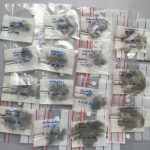 Polymorphic DNA microsatellite markers for forensic individual identification and parentage analyses of seven threatened species of parrots (family Psittacidae)
Polymorphic DNA microsatellite markers for forensic individual identification and parentage analyses of seven threatened species of parrots (family Psittacidae)
Jan and Fumagalli (2016), PeerJ, DOI 10.7717/peerj.2416
voir article

